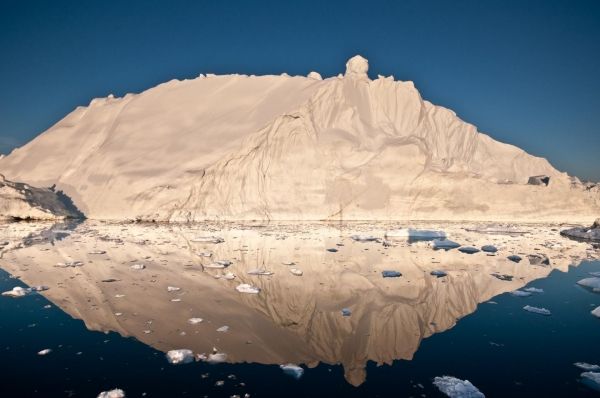Greenland is losing ice faster than in the 1990s and is tracking the Intergovernmental Panel on Climate Change’s high-end climate scenario.
As a result, 40 million more people will be exposed to coastal flooding by 2100.
A team of 89 polar scientists from 50 international organisations have produced the most complete picture of Greenland ice loss to date.
The Ice Sheet Mass Balance Inter-comparison Exercise (IMBIE) Team combined 26 separate surveys to compute changes in the mass of Greenland’s ice sheet between 1992 and 2018. Altogether, data from 11 different satellite missions were used, including measurements of the ice sheet’s changing volume, flow and gravity.
Read more at University of Leeds
Image: The midnight sun casts a golden glow on an iceberg and its reflection in Disko Bay, Greenland. Much of Greenland's annual mass loss occurs through calving of icebergs such as this. (Credit: Ian Joughin, University of Washington)


